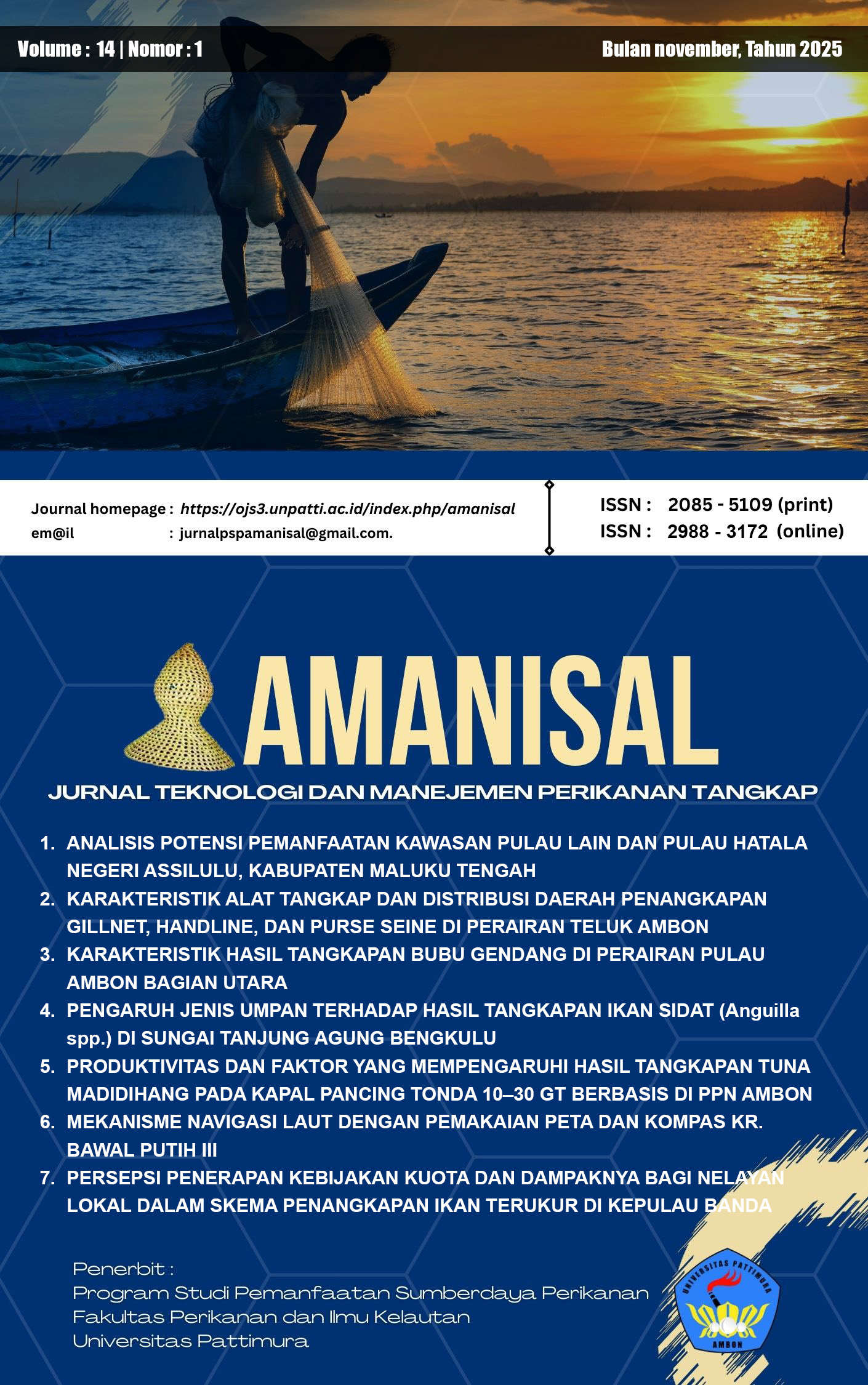KARAKTERISTIK HASIL TANGKAPAN BUBU GENDANG DI PERAIRAN PULAU AMBON BAGIAN UTARA
Abstract
The northern coastal waters of Ambon Island, particularly the area of Negeri Larike, serve as an important habitat for various economically and ecologically valuable reef fish species. Fishing activities using traditional drum traps (bubu gendang) are still practiced by local fishers as part of a small-scale, sustainable fishery. This study aims to analyze the catch characteristics of the bubu gendang operated in the northern waters of Ambon Island, particularly in the coastal area of Negeri Larike. The observed parameters include species composition, total length distribution, and bycatch rate. Data were obtained through direct observation of the catches from two traditional bubu units operated for one day, from 06:00 WIT to 06:00 WIT the following day, followed by species identification and biometric measurements. The results showed a total of 144 individual fish caught, comprising 20 species dominated by the families Acanthuridae (27.8%) and Chaetodontidae (22.2%). In terms of biomass, Calotomus carolinus contributed the highest (15.0%). Most of the fish caught were within the small to medium size range, with the highest average total length recorded in the Caesionidae family (23.5 cm). The bycatch rate was recorded at 32.7% by number of individuals and 18.2% by biomass. These findings indicate that the bubu gendang demonstrates good selectivity toward target species, although there remains a potential for capturing non-target species. This study provides technical recommendations for improving trap selectivity through the development of more environmentally friendly designs. It contributes scientific insights for evaluating the effectiveness of traditional fishing gear and supports sustainable fisheries management strategies based on coral reef ecosystem approaches in coastal areas.
Downloads
Copyright (c) 2025 Kautsar Ailatat, Kedswin G. Hehanussa, Agustinus Tupamahu, Selfi Sangadji

This work is licensed under a Creative Commons Attribution-ShareAlike 4.0 International License.






